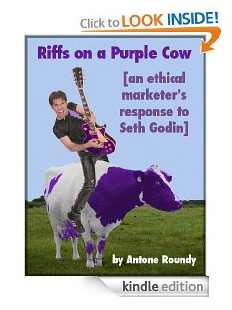When you purchase through links on our site, we may earn an affiliate commission (details)
"There Must Be 50 Ways to Lead Your Customer…"
How do you get prospects to buy your products? Not by convincing them to want it, but by showing them that it's what they already want.
A few days ago, Bryan Eisenberg shared a list of 20 reasons why people buy. Here are a few (click the link to see the rest that he lists...and then think of some more):
- Basic needs. We buy things to fulfill what Maslow describes as the bottom of his hierarchy; things like food and shelter.
- Convenience. You need something now and will take the easiest or fastest path to get it. Think about the last time you were running out of gas, or were thirsty and found the nearest beverage of choice. This could also be choosing the safe vendor (no one ever gets fired for hiring IBM), or purchasing something to increase comfort or efficiency.
- Replacement. Sometimes you buy because you need to replace old things you have (e.g., clothes that don't fit or are out-of-date). This could be moving from a VCR to a DVD player.
- Scarcity. This could be around collectibles or a perceived need that something may run out or have limited availability in the future. Additionally, there's a hope to gain a return on investment, such as collectibles or antiques; anything that accrues value over time.
So, once you've got a list like this, how do you use it?
You could look through the list and pick out the motivations that apply to your product.
That'd be a good start. But why not dive deeper? Figure out how to apply the others to your product too.
For example, even if your product doesn't supply a basic need like food or shelter, if it makes people money, it can supply those needs indirectly. Have you ever seen a sales letter for a make-money product that asks "what would an extra $500 a month do for you? Cover a car payment? Pay your rent? ..." The seller is connecting the product to needs it fulfills indirectly.
Why do that? Why not stick to the direct benefits of the product? Because not every prospect is going to be motivated by the same things. Notice how in the "extra $500" list above, a variety of things were mentioned that the prospect could do with the money. Same reason. Some people aren't making car payments right now. So mention rent, vacations, and a few other things that they might be interested in.
Of course, you don't want to bore your prospects with a monotonous laundry lists of reasons to buy. But the more motivations you can weave into a nicely flowing sales presentation, the more likely you'll be to hook any particular prospect with the promise of something they already want.
To paraphrase Paul Simon, "there must be fifty ways to lead your customer" to buy. Unless you're only leading one customer, and you know exactly what will motivate them, you may need to include more than one of the fifty in your sales pitch.




